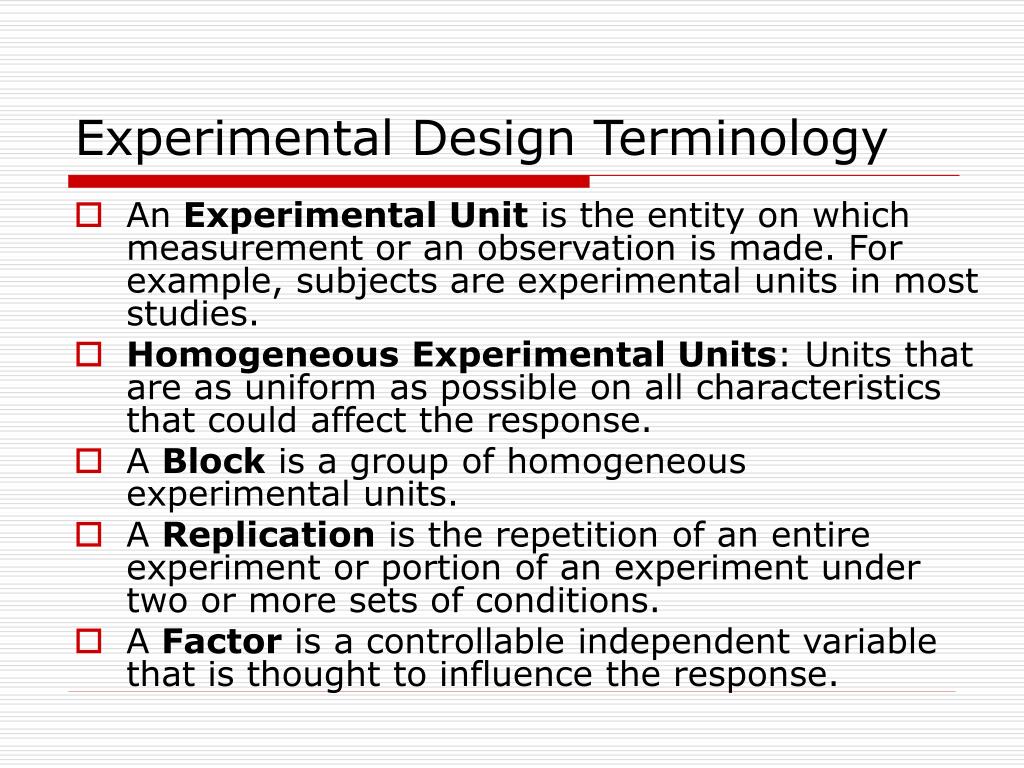Table Of Content

For instance, when researchers wanted to figure out if the Head Start program, aimed at giving young kids a "head start" in school, was effective, they used a quasi-experimental design. They couldn't randomly assign kids to go or not go to preschool, but they could compare kids who did with kids who didn't. Experimental design involves testing an independent variable against a dependent variable. Let's say you want to measure sleep's impact on a student's academic performance. You need to expose your participants to at least two different levels of sleep to investigate its impact on their academic performance.
Sampling methods
A Quick Guide to Design Rigorous Machine Learning Experiments - Towards Data Science
A Quick Guide to Design Rigorous Machine Learning Experiments.
Posted: Wed, 08 Feb 2023 08:00:00 GMT [source]
Quasi-experiments still play with an independent variable, just like their stricter cousins. It's like wanting to divide a bag of jelly beans equally between your friends, but you can't quite do it perfectly. So, they recruited students on a college campus to participate in their study. The students were randomly assigned to either the treatment condition or control condition.
Types of Experimental Research Designs
It is based on the comparison between two or more groups with a straightforward logic, which may, however, be difficult to execute. In practical terms, this design is often seen in clinical trials for new drugs or therapies, but its principles are also applicable in fields like psychology, education, and social sciences. Let's say researchers are testing a new medication for high blood pressure. Participants might have different ages, weights, or pre-existing conditions that could affect the results.
Frequently asked questions

Because it uses the same subjects, you don't have to worry about differences between groups messing up your results. Time to meet the Repeated Measures Design, the time traveler of our research team. If this design were a player in a sports game, it would be the one who keeps revisiting past plays to figure out how to improve the next one. For instance, if you've ever heard of studies that describe how people behave in different cultures or what teens like to do in their free time, that's often Non-Experimental Design at work. These studies aim to capture the essence of a situation, like painting a portrait instead of taking a snapshot.
Study on the Impact of an Advertisement
For instance, maybe a new study drug works really well for young people but not so great for older adults. A factorial design could reveal that age is a crucial factor, something you might miss if you only studied the drug's effectiveness in general. It's like being a detective who looks for clues not just in one room but throughout the entire house. Because this design produces a lot of data, and computers are the number crunchers that help make sense of it all.
This is necessary in just about every field of research, and especially in medical sciences. In a repeated measures design, participants take part and are assessed in each experimental condition. Therefore, the data for each IV condition come from the same participants. This experimental design is also referred to as a within-subjects design. The independent measures design is an experimental design in which you only assign participants to one of your experimental conditions. In a factorial design, participants are randomly assigned to one of several groups, each of which receives a different combination of two or more independent variables.

What are the Data Collection Methods in Experimental Research?
If you take one path and find a treasure chest, you might decide to continue in that direction. Sequential Design operates in a similar fashion, allowing researchers to make decisions at different stages based on what they've learned so far. In terms of applications, Stepped Wedge Designs are commonly used in public health initiatives, organizational changes in healthcare settings, and social policy trials. They are particularly useful in situations where an intervention is being rolled out gradually and it's important to understand its impacts at each stage. Secondly, it's useful when resources are limited and it's not feasible to roll out a new treatment to everyone at once. Lastly, because everyone eventually receives the treatment, it can be easier to get buy-in from participants or organizations involved in the study.
Experimenter effects
Here, instead of randomly assigning to conditions, they are randomly assigned to different orders of conditions. In fact, it can safely be said that if a study does not involve random assignment in one form or another, it is not an experiment. Random assignment is not guaranteed to control all extraneous variables across conditions. However, there are some reasons that this possibility is not a major concern. One is that random assignment works better than one might expect, especially for large samples.
True experimental research design
Experimental research design is a scientific framework that allows you to manipulate one or more variables while controlling the test environment. The research methods you use depend on the type of data you need to answer your research question. Before collecting data, it’s important to consider how you will operationalise the variables that you want to measure. In quantitative research, you’ll most likely use some form of statistical analysis. With statistics, you can summarise your sample data, make estimates, and test hypotheses.
Surveys can be shared with the respondents both physically and electronically. When collecting data through surveys, the kind of data collected depends on the respondent, and researchers have limited control over it. Experimental research design can be majorly used in physical sciences, social sciences, education, and psychology. This is very common in educational research, where administrators are unwilling to allow the random selection of students for experimental samples. Because the study is happening in a real school with real students, the results could be very useful for understanding how the change might work in other schools. But since it's the real world, lots of other factors—like changes in teachers or even the weather—could affect the results.
A good experimental design helps you ask the right questions (think critically), decide what to measure (come up with an idea), and figure out how to measure it (test it). It also helps you consider things that might mess up your results, like outside influences you hadn't thought of. Alright, before we dive into the different types of experimental designs, let's get crystal clear on what experimental design actually is.

No comments:
Post a Comment